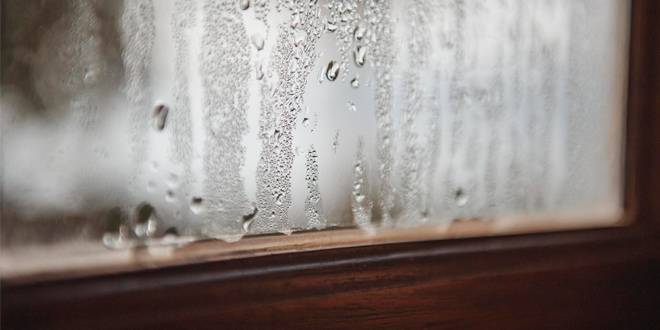
In Langhorne, PA, where the seasons bring diverse weather conditions, understanding the impact of your home’s humidity levels on comfort is essential. This guide explores how humidity affects indoor living spaces and offers solutions for maintaining the ideal balance throughout the year.
The Role of Humidity in Home Comfort
Humidity, the presence of water vapor in the air, plays a pivotal role in determining the comfort, health, and well-being of occupants, as well as the integrity of the home structure and contents.
Optimal Humidity Levels
Comfort and Health: The ideal indoor humidity level of 30% to 50% is crucial for maintaining comfortable living conditions. Within this range, the body’s natural cooling mechanism, through perspiration and evaporation, functions efficiently, reducing the risk of heat-related stress and discomfort.
Preservation of Home Furnishings: This humidity range also helps in preserving the integrity of woodwork, furniture, and musical instruments, preventing them from drying out, cracking, or warping. Additionally, it reduces the likelihood of static electricity build-up, protecting electronic devices.
High Humidity Issues
Feeling Hotter Than Actual Temperatures
High humidity levels can make the air feel warmer than it actually is by hindering the evaporation of sweat from the skin, the body’s natural cooling process. This can lead to discomfort and the need for lower thermostat settings, increasing cooling costs.
Mold and Mildew Growth
Excess moisture creates an ideal environment for mold and mildew to thrive, potentially causing damage to walls, ceilings, and furnishings. Beyond structural damage, mold spores can significantly impact indoor air quality and health, particularly for those with allergies or respiratory conditions.
Increased Allergens
High humidity promotes the proliferation of dust mites and other allergens, exacerbating symptoms for individuals with allergies and asthma. Managing indoor humidity is crucial in mitigating these allergens.
Low Humidity Problems
Dry Skin and Respiratory Issues
Low humidity levels can dry out the skin and mucous membranes, leading to discomfort, irritation, and exacerbation of respiratory conditions. It can also increase susceptibility to colds and infections due to compromised mucosal barriers.
Damage to Wooden Furnishings
Wood is particularly sensitive to humidity fluctuations. Low humidity can cause wood to lose moisture and contract, leading to cracks, splits, and warping. This not only affects the aesthetic and structural integrity of wooden items but can also lead to costly repairs or replacements.
Static Electricity
In dry conditions, static electricity becomes more prevalent, leading to discomfort from shocks and potential damage to sensitive electronic equipment.
Managing Humidity for Comfort
Use of Humidifiers and Dehumidifiers
These devices are essential for adjusting indoor humidity levels to within the optimal range, enhancing comfort and protecting the home’s interior and occupants’ health.
Ventilation
Proper ventilation, particularly in high-moisture areas like kitchens and bathrooms, is critical in managing humidity levels. Ventilation systems or exhaust fans can help expel excess moisture, preventing condensation and mold growth.
Air Conditioning
Modern air conditioning units do more than cool the air; they also remove excess moisture, contributing to humidity control. Ensuring your AC unit is correctly sized and functioning efficiently is key to maintaining comfortable humidity levels.
The Impact of Seasonal Changes
Summer
The challenge in summer is often combating high indoor humidity levels, necessitating the use of air conditioning and dehumidifiers to maintain comfort and protect the home from moisture damage.
Winter
In winter, the use of heating systems can dry out the indoor air. Humidifiers become essential in adding necessary moisture to prevent the adverse effects of low humidity on health and home furnishings.
Solutions for Maintaining Ideal Humidity Levels
Maintaining the ideal humidity level in your home is crucial for comfort, health, and the preservation of your property. Here’s how homeowners can actively manage and maintain these levels:
Regular Maintenance of HVAC Systems

Scheduled Servicing: Have your HVAC system serviced by a professional at least once a year. This ensures that your air conditioner and furnace are in top working condition, which is essential for controlling humidity. During servicing, technicians can identify and rectify issues that may affect the system’s efficiency in humidity control.
Filter Replacement: Regularly replace or clean the HVAC filters (every 1-3 months, depending on usage and type). A clean filter improves air flow and efficiency, which is vital for removing excess moisture during the cooling process.
Duct Inspection: Ensure that ducts are inspected for leaks or blockages during maintenance checks. Leaky ducts can lead to moisture problems and affect the overall humidity control within the home.
Sealing Leaks to Prevent Uncontrolled Moisture Exchange
Windows and Doors: Check seals around windows and doors annually and replace weather stripping that is worn out. Use caulk to seal any gaps that allow outside air to infiltrate, as this can introduce or release moisture, disrupting indoor humidity levels.
Ductwork Sealing: Use mastic sealant or metal tape to seal any leaks in ductwork. This prevents conditioned air from escaping and unconditioned air from entering the system, which can affect humidity levels and overall HVAC efficiency.
Insulation: Proper insulation in your attic, walls, and floors helps maintain your home’s temperature and prevents excessive heat exchange, which can influence indoor humidity levels. Insulation should be checked and upgraded if necessary to ensure it meets your home’s needs.
Monitoring Humidity for Timely Adjustments
Hygrometer Use: A hygrometer is an inexpensive tool that measures the level of humidity in your home. Place hygrometers in various rooms to monitor humidity levels throughout.
Smart Thermostats: Consider upgrading to a smart thermostat with built-in humidity sensors. These devices can automatically adjust both temperature and humidity levels, providing a more comfortable and energy-efficient home environment.
Responding to Readings: If humidity levels are consistently outside the 30% to 50% range, use humidifiers to add moisture in dry conditions or dehumidifiers to remove excess moisture in damp conditions. For homes with HVAC systems, adjusting the thermostat or using the air conditioning can help manage humidity by cooling the air and removing moisture through condensation.
Implementing Humidity Control Solutions
By understanding and implementing these solutions, homeowners can significantly improve their indoor air quality and comfort. Regular maintenance ensures that your HVAC system efficiently manages air temperature and humidity, while sealing leaks prevents unwanted moisture exchange with the outside environment. Monitoring with a hygrometer or smart thermostat allows for timely adjustments, keeping your home within the ideal humidity range.
Maintaining ideal humidity levels is a proactive process that enhances the living environment, making your home a healthier and more comfortable place for everyone.
FAQ: How Humidity Affects Comfort in the Home
What is the ideal indoor humidity level for comfort?
The ideal indoor humidity level for comfort is between 30% and 50%. This range helps ensure a comfortable environment by facilitating effective sweat evaporation, maintaining healthy skin and respiratory systems, and preserving the condition of home furnishings.
How does high humidity affect indoor comfort?
High humidity can make indoor environments feel warmer than they actually are because the excess moisture in the air hinders the evaporation of sweat from the skin, reducing the body’s ability to cool itself. It can also lead to the growth of mold and mildew, contribute to an increase in indoor allergens, and cause discomfort or health issues for occupants.
Can low humidity levels impact comfort?
Yes, low humidity levels can lead to dry skin, irritated eyes, and respiratory discomfort by drying out mucous membranes. It can also increase the likelihood of static electricity, which can be a nuisance or even damage sensitive electronics. Furthermore, low humidity can cause wood to shrink and crack, affecting floors, furniture, and musical instruments.
What are the signs of high humidity in my home?
Signs of high humidity include condensation on windows, a musty odor (indicating mold or mildew growth), and an overall feeling of stuffiness or mugginess in the air. You might also notice that woodwork and furnishings feel damp or that wallpapers start to peel.
What can I do to reduce high humidity in my home?
To reduce high humidity, use dehumidifiers in damp areas, ensure proper ventilation in high-moisture areas like bathrooms and kitchens, and use air conditioners during hot weather to remove moisture from the air. Sealing leaks around windows and doors can also prevent excess moisture from entering your home.
How can I increase humidity levels if my home is too dry?
If your home is too dry, using a humidifier can add necessary moisture to the air. Placing houseplants around your home or leaving water basins near heating sources can also naturally increase humidity levels. Ensuring your home is well-sealed will prevent warm, moist air from escaping.
Does the need for humidity control vary by season?
Yes, the need for humidity control can vary significantly by season. In winter, indoor air tends to be drier due to heating, which may require the use of humidifiers. In contrast, summer often brings higher humidity levels, making dehumidifiers or air conditioning necessary to maintain comfort.
How can I monitor the humidity level in my home?
You can monitor the humidity level in your home with a hygrometer, a device that measures the amount of moisture in the air. Many modern thermostats and smart home systems also include humidity sensors, allowing you to track and adjust your indoor humidity levels easily.
Can improving humidity levels help with allergies?
Yes, maintaining optimal humidity levels can help alleviate allergy symptoms. High humidity can foster the growth of mold and dust mites, common allergens, while low humidity can irritate the respiratory system. Keeping humidity levels in the ideal range can reduce these issues.
Should I consult a professional for humidity control solutions?
If you’re experiencing persistent issues with maintaining comfortable humidity levels in your home, consulting a professional can provide you with tailored solutions. HVAC experts can recommend the best humidifiers, dehumidifiers, and ventilation systems for your specific needs and help ensure your home’s HVAC system is properly balanced for humidity control.
Embrace Comfort with Balanced Humidity 🌡️💧
Struggling with humidity levels in your Langhorne, PA, home? JR Michalski Heating & Air Conditioning is here to help. Our expert team can provide solutions tailored to your needs, from installing humidifiers and dehumidifiers to servicing your HVAC system for optimal humidity control. We also offer heating and cooling installations, repairs, and maintenance. Experience the perfect balance of comfort and health in your home. Reach out today and let us enhance your indoor climate.


